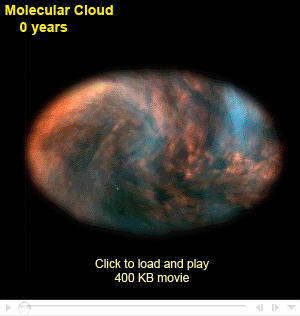O Class Stars
(Blue Supergiants)

- The largest stars. Stars cannot grow beyond O size by ordinary means. The fierce radiation blast from O class stars prevents further matter from falling in and clears dust and gas away from the surrounding region.
- The hottet stars. Much of their radiation is emitted beyond the blue end of the spectrum in ultraviolet.
- Factories for producing heavy elements. Elements beyond hydrogen and helium are synthesised in their dense, hot cores. Elements beyond iron are synthesised during the core collapse stage. The explosion triggered by core collapse blasts much of the synthesised material back into space.
Life Phases
- Formation phase. Gravitational collapse of a molecular cloud. Duration: a few hundred thousand years.
- Main sequence hydrogen fusion phase. Hydrogen is fused at a prodigious rate and that fuel source is exhausted in a few million years.
- Red Supergiant helium fusion phase. Helium, followed by a succession of heavier elements is rapidly fused to form even heavier elements. Duration: a few hundred thousand years.
- Supernova explosion phase. When fusion ceases, the core collapses. Elements heavier than iron are synthesised during the collapse. Matter is blasted back into space by the explosion.
- Collapsed core phase. The most massive cores collapse all the way to black holes. Less massive O star cores collapse to form neutron stars - bodies heavier than the Sun, but only twenty kilometres or so across.
Abundance
- O class stars are the least common stars. They can form only in the densest dust clouds. They don't last long - after a fast and furious life, they blast themselves apart again.